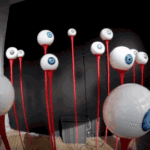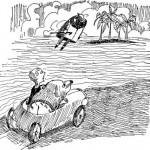Pandora: musical chaos with extra D.
Image via CrunchBase
Sometimes I’m afraid that the like button on Pandora may irrevocably change my station to play music that I don’t like. How can Pandora make its interface better?
I’m a big fan of Pandora online radio. It’s a clever concept and free music is always good. However, once I’ve set my channel and I get it playing the music I want, I tend to avoid fine tuning it.
The issue is that I don’t understand what liking a song can do to my channels. After spending time using Pandora, it seems that half of the stations I create end up playing the same music. Now, I start a channel, make a few likes and try not to do anything else, I even avoid disliking music.
Transparency is needed.
When hit the like button on Pandora it tells me about certain parts of the music, funny lyrics, strong piano line or something else, that influence my channel. I’m not sure to what degree these song elements effect my station nor do I know how it compounds with other times I’ve interacted with Pandora.
I’d do things much differently. It’s clear that there is a lot of complex musical math going on behind the scenes. I want to see that. When I like a song, I want to see what it adds to the channel in some sort of value system. It might make sense to apply RPG-style attributes to each channel. This way I know that if I like a specific song, I’m adding +5 Fast Piano, +2 Rock Guitar and +1 Joke Lyrics to my channel. As the music starts playing, I’d have a better understanding of what my choices mean for the type of music I’m going to hear and a better understanding of the underlying musical theories that Pandora runs on.
It’s important, when you are developing an interface for constant use like Pandora’s, to make sure that the interactions between the user and the program are transparent. It allows users to understand what they are doing and to gain a sense of ownership over their interactions. It’s hard to invest time in something that you don’t understand.
Here’s what I’d change:
- Make the statistics that each song would add or subtract from your channel transparent at each opportunity for interaction.
- Allow users to view the channel and see what values they have assigned.
- Allow users to take only some of the values from a song. For example, Tenacious D plays on many of my Pandora channels. Now I love The D, but I don’t really want them showing up on every channel. I should be able to subtract their humorous lyrics without losing points from awesome rock.
- Represent overall statistics on the profile home page.
- Provide publicly visible achievements for hitting certain levels positive or negative in any given category.
- The manual quick mix is pretty cool, but I’d also want to provide an overall mix, a channel generated from my profile’s total added statistics.
You may have noticed some ludological elements incorporated into this UI concept. To make it clear, every good interface needs game elements. Your users should have the opportunity to explore, accumulate and represent their interactions to others.
Your interface should always tell a story to the user, or provide the ability to create a narrative. A successful interface will have the user telling an interaction story. In this example it might go something like this:
Hey man, I was able to increase my overall profile with five more points to rock guitar and discovered just the right crappy songs to eliminate nu-metal. I took points out of steel drums, god knows how I got those. Then, I got the Classic Rocker achievement, because I had enough points in Rock Guitar and Freddie Mercury-style.
Not only does this style of interface make user interaction easier and enjoyable, but creating opportunities for your users to tell a story about your product is the best word of mouth marketing you can have.





























